A typical business spends around $24,000 per person to improve sales productivity. But 49% of those organizations have zero or limited means to measure it.
What does that mean?
It means that while a lot of effort goes into enhancing sales productivity, little goes into actually understanding it first. That’s where it starts going wrong.
Knowing exactly what sales productivity is, how to measure it, and how to improve it for your organization is the first thing you need to win.
This post can help you there.
What is sales productivity?
Sales productivity is all about maximizing the output of a sales rep while minimizing the resources needed for it. It is a measure of two things:
- Efficiency: The least number of resources required by your reps to produce the desired result. For example, assume that John generates a sale in 40 hours and Emily in 20. Therefore, the efficiency of Emily is higher than that of John.
- Effectiveness: Of the resources available, how successfully do your reps utilize them to produce results. For example, assume that John and Emily both have 20 hours. Effectiveness is measured by the results John and Emily produce at the end of 20 hours. John gets 12 leads during that time, and Emily 20. Hence, Emily is more effective in utilizing resources.
Sales productivity combines both these individual measures to give you a complete overview of the sales rep’s performance. The formula to calculate it is:


Why is sales productivity important?
Sales productivity gives you a better picture of a sales representative’s potential and the challenges they face in making a sale. Looking at performance just gives you a part of the picture, whereas productivity gives you a holistic view.
Let’s follow this with an example.
You have two sales reps, John and Emily, making cold calls every day. Here is a brief of how they performed in the last quarter:


If you track individual metrics, here’s what you’ll know about them:
Efficiency: In the allotted 400 hours, John made only 1000 calls to reach his target. On the other hand, Emily made 2000 calls at the same time. Therefore, Emily is a more efficient employee.
Effectiveness: John generated an average of $40 for each call he made, whereas Emily made $20. Hence, John triumphs in terms of effectiveness.
Confused about who is the better employee?
Looking at the sales rep’s performance from the revenue perspective is a good start. However, to know their true value, you need the full picture.
A short-sighted perspective would tell you that John is probably better – because his calls yield more results.
However, calculating their sales productivity tells a different story:
John’s sales productivity = 1000 X 40 = 40,000 (efficiency = 1000 calls, effectiveness = $40)
Emily’s sales productivity = 2000 X 20 = 40,000 (efficiency = 2000 calls, effectiveness = $20)
This shows that both the employees are equally productive and hence equally valuable – an insight that you would have otherwise missed!
This is why tracking sales productivity is essential.
- It gives you the overall picture rather than a single aspect of an employee.
- It provides you with insights into the strengths and weaknesses of your employees. Having these details help you better allot tasks, create strategies, and improve the overall margins for your business.
For example, John’s strong-point could be upselling to customers, which is why he was able to generate more sales per call. Emily, on the other hand, could excel in bringing in new customers, which is why her output per call was low but made more calls.
You May Also Like: How to Integrate CallHub into Your Call Center’s Employee Onboarding Process
Sales productivity metrics that you need to track
This is where 49% of companies go wrong. They track metrics purely focussed on sales and not on other tasks that lead up to the big sale.
A sales rep typically spends 22% of their time in admin work, 5% in meetings, 6% in planning, etc. Failing to account for these tasks is the first mistake businesses make. For a more accurate picture, these are the sales productivity metrics you should be tracking.
Percentage of time spent on selling activities
How much of the total time allotted is being spent on selling and activities that directly relate to it? Examples of such activities include:
- Cold calling (to generate leads)
- Following up with qualified leads over call
- Responding to sale related queries over text or email
Why is it important for you?
You need this metric to understand whether you need to change or update your processes.
Studies show that the ideal sales rep should spend at least 23% of their time on selling activities. This number is higher for those who are not involved in any fieldwork. The rest of their time goes into activities like:
- Administrative work
- Research and planning
- Travel (if applicable)
- Order processing, etc.
If the percentage is low, then you need to review all activities and see what can be automated or eliminated.
Your objective should be to increase the percentage of time spent on selling activities.
Percentage of marketing collateral used by salespeople
Of all the marketing collaterals available in your deck, how many of them do your salespeople use? Marketing collateral helps you communicate the key benefits of your business/product and works to influence prospects into making a purchase.
These collaterals include:
- Product ebooks, white papers, and case studies
- Brochures, pamphlets, or flyers
- Blogs, videos, infographics, newsletters, etc.
Why is it important for you?
The percentage of marketing collateral used by salespeople indicates how well prospects are being guided down the sales funnel.
This data helps you understand whether:
- The stages of your funnel are apt, and prospect interest increases at each stage
- Your marketing team’s efforts in creating the collaterals are working or need to be changed
Keep in mind that the more collaterals you share, the more you pique a prospect’s interest and increase their likelihood of making a purchase. Therefore, the higher this percentage is, the better.
Note: For the best insights, you should be tracking this sales productivity metric for each stage of the funnel.
Percentage of time spent on non-selling activities
No matter what you’re selling, there is always some manual data entry or content creation involved. This metric gives you an insight into how much time a rep spends on these activities.
These additional tasks, that we saw above, needed to support the selling activities include:
- Creating and personalizing content for follow up emails or texts
- Crafting calling scripts after researching about the prospect (if applicable)
- Noting down prospect responses (or other data) and conversation notes after a call
- Filing sales and order reports
Why is it important for you?
You require this metric to understand if there is an immediate need to change how you approach these manual tasks.
Generally, if the percentage is high, you have to check if:
- Data entry activities can be delegated to anyone else (apart from sales reps)
- Taking down notes and data during the call can be enabled
- Calling scripts and email/text templates can be provided instead of the reps working on them
In the end, the percentage of time spent on these non-selling activities should be reduced as much as possible.
Average number of sales tools used daily
Tells you the average number of sales tools a representative uses every day. Keep in mind that it only includes the tools that directly or indirectly support selling activities. For example:
- CRM system for data management and automation
- Email marketing or mass texting solution for outreach and follow-ups
- Outbound calling software for cold calls
- Sales analytics and tracking software, etc.
Why is it important for you?
This sales productivity metric helps you understand what your salespeople need to generate more revenue. With this, you can get insights into:
- The tools that you may be spending on but may not be required
- Additional integrations for tools you might need to make the sales rep work easier
While it may seem counterintuitive, you should aim to reduce the average number of tools sales rep use.
Don’t take it the wrong way. Your focus shouldn’t be on getting rid of tools. Instead, you should leverage comprehensive solutions with more features.
For example, instead of using a call center software and a texting software (for follow-ups), use a call center solution with a text through call center feature. This also saves the employee’s effort to switch between apps.
Percentage of high-quality leads with whom you have followed up
How many high-quality leads do your salespeople follow-up with after they convey their interest? Generally, there should be multiple rounds of follow-ups for high quality-leads which could include:
- A phone call or voicemail message for the first follow-up
- Text or email for the second follow-up
- Another reminder text or email as the third
- A last phone call for the final follow-up
Why is it important for you?
This metric gives an idea of how your sales reps are going about qualifying leads and following up with them. Lower percentages mean that you’ll have to go over:
- Ways to automate the follow-up process
- Review how your sales reps prioritize and schedule follow-ups
Your primary goal should be to follow-up with “ALL” high-quality leads. These are opportunities that should not be missed.
Note: For the best insights, it is recommended that you track this metric for each follow-up iteration (percentage of first follow-up, percentage of second follow-up, etc.).
With all these metrics at hand, you’ll have a better idea of how to implement the tactics to improve your sales productivity.
5 ways to improve sales productivity
Tips to improve sales productivity
| Challenges | Solution | |
| 1. | New challenges not covered in old onboarding programs. Forgetfulness, 70% hires forget training in a few weeks |
Practical training programs with role-playing. Peer training/discussions sessions to discuss best practices Up to date training programs to include new on-ground sales challenges |
| 2 | Targeting/persuading wrong customers for sales Inability to address prospect pain points and offer a feasible solution |
Create Ideal Customer Profile (ICP) from previous customer data Interview existing customers to list down major pain points and requirements Add details in ICP template for sales reps to refer to during the research |
| 3 | Missed or delayed follow-ups with high-quality prospects | Train reps to add calendar reminders after each call (but this requires manual efforts) Employ software to set up reminders during the call and get notified later |
| 4. | Undermotivated employees due to monotonous schedule and tasks | Promote healthy competition among peers by gamifying sales campaigns Leverage time-sensitive contests to drive creativity in meeting objectives |
| 5 | Lack of communication between teams for combined efforts to drive sales | Conduct regular inter-team meetings and business brainstorming sessions Map out the lead journey for teams to refer to and check the impact their efforts are making Set up a seamless internal communication system to discuss updates and immediate concerns |
Create an effective onboarding and training program
A majority of organizations only plan for a training program for new hires. These programs are also mostly theoretical. This approach is fundamentally flawed:
One, recruits forget what they have been taught within 24 hours, at least 70% of them as per studies.
Two, it doesn’t accommodate for new challenges that may come up later, or even what existing employees might be facing.
The solution
To increase sales productivity, you need to revamp your training programs to equip your sales reps with the right skills. What you need is:
- Practical training programs for new hires (and not just theory). For example, role-playing sessions can help them understand both their objective and the prospect in more detail.
- Regular, up to date, training sessions for all employees. These should cover significant challenges that may have come up later.
- Peer training/discussion sessions in which top performers discuss best practices they follow to improve sales. This gives people insights into how to think on their feet, which training programs might not cover.
Create ideal customer profiles
Targeting the wrong customers can set your conversions back significantly. It eats into valuable time and effort without yielding any results.
Not being able to address a prospect’s pain points and offer your product (or service) as a solution is another major concern. If reps are unable to convey the value of the product, prospects don’t convert.
The solution
Create an Ideal Customer Profile (ICP), which is a detailed outline of your ideal customer. The outline comprises of information like background, behavior, needs, challenges, etc. This data gives you an idea of the pain points you need to address and how to pitch your product.
To create a solid ICP, here is what you need to do:
- Go through previous sales data and make a note of common characteristics among those who converted. If there is some variation, you can create different groups.
- If possible, interview previous customers to find out their major pain points, how your organization solves their problems, and objections they may have.
- Fill out these details in a customer profile template of your choice. Your sales team can refer to it to get an idea of what to expect during conversations. You can even portray this ideal customer during your role-play training sessions.
Here is an example of an ICP profile for your reference:


Set up reminders for follow-up schedules
A significant issue with sales reps is that they often forget to follow-up with qualified leads. Among the horde of other contacts, it becomes quite difficult for them to keep track.
But, note that even though 45% of qualified leads convert, only 2% of these happen during the first contact. This makes follow-ups all the more critical.
The solution
To avoid this forgetfulness, you need a set up a system to automatically schedule and prioritize these follow-ups. You can do this by:
- Train them to set up calendar reminders for follow-ups after each call. This, however, will demand a lot of manual effort on their part.
- Leverage software that allows reps to set reminders during the call and get notified about it later.
For example, in CallHub, agents can set up the “Callback” disposition during the call with the exact date and time to follow up. When it’s time, the tool prioritizes the follow-up over others and automatically places the call before moving on to the other leads.
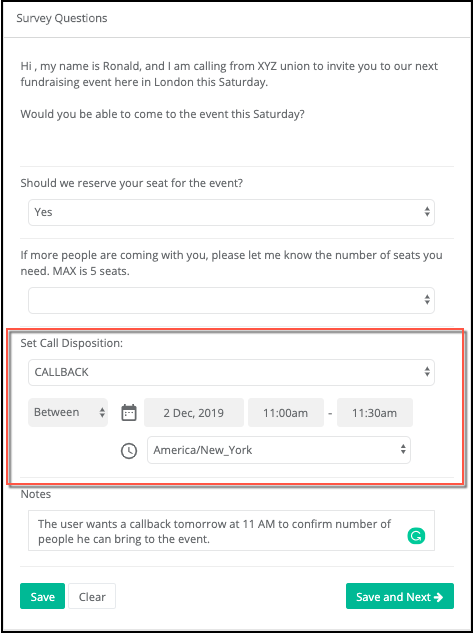

Managers can also view these callback reports on their dashboard to track the percentage of quality leads being followed up with. Plus, they can also reschedule and set up reattempts for these callbacks as per their priorities.


Having such a handy system reduces the tedious manual effort required to keep track of follow-ups. It also helps improve sales productivity by allowing agents to truly focus on selling.
Promote healthy competition to keep motivation high
One of the most common reasons for decreasing sales productivity is the lack of motivation. This usually happens if the tasks get monotonous.
Demotivation is also caused if employees are focused on completing tasks (like making a 1000 calls/week) rather than goals. Without objectives, they are not driven to innovate their approach, which is why boredom strikes.
The solution
Keep the workplace engaging with some healthy competition. It inspires people to put in more effort and get creative to achieve results. You can accomplish this by:
- Create urgency with time-sensitive contests. For example, generating $500 of sales before noon (or end of the day)
- Gamifying sales targets. Have a leaderboard that displays real-time data to everyone and keeps people on their feet.
Here’s an example of how the leaderboard feature looks in CallHub:


Establishing strong inter-team relationships
Sales are the ultimate goal for all teams, and their efforts should be aligned to make more sales. But the lack of interaction often leaves them fighting in the dark.
For example, if the marketing team isn’t aware of the quality of the leads given to salespeople, they would never know if they had to change their process to get better leads.
Similarly, if the customer success team does not communicate the main reason customers ‘churn’, the sales team can’t tweak their process.
The solution
To provide the sort of visibility into the other team’s efforts, you will have to:
- Hold regular meetings for all team leaders (and members, if possible) to raise any concerns. During this time, they can also brainstorm to come up with new ideas.
- Set up a communication channel to discuss objectives, updates, and immediate concerns.
- Map out the lead journey for different teams to keep track of the impact they have on conversions.
With all the above tips in place, you will need to need to streamline your processes with the right technology.
Sales productivity tools that you must have
Reps have varying tasks to accomplish, and having different tools for each requires them to constantly switch between them. While the effort seems insignificant at first, it piles up and eats into valuable selling time.
Therefore, to avoid the constant switching, you should aim to employ sales productivity tools with more features than a higher number of tools.
That being said, some essential tools that you must have are:
Customer Relationship Management system (CRM)
A CRM acts as the hub for all your data. When selecting a CRM, ensure that it allows you to:
- Integrate with all your tools to import and export prospect and sales data.
- Create templates and schedule emails to be sent for following up
- Stores (and updates) prospect data in an easily searchable format
- Tracks interactions and has a sound lead scoring system to help you prioritize follow-ups
Other functionalities, like the ability to create automation flows, mobile accessibility, etc. can also come in handy but aren’t necessary.
Salesforce is an example of a CRM that can help you increase your sales productivity.
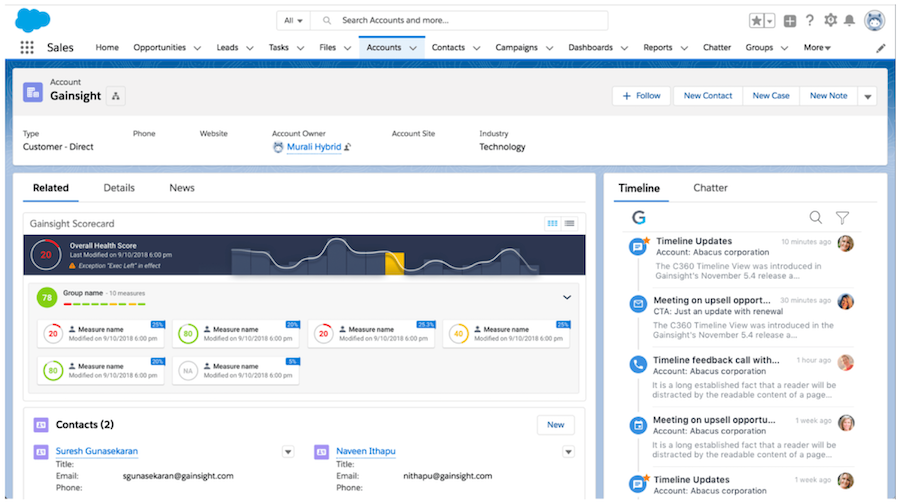

Salesforce integrates with other outreach software (like CallHub) quite easily too.
Outbound calling software
You need an outbound calling software that manages all your contact/lead data and makes the call. This will make the process more streamlined.
When looking for a calling solution, these are the features it must have.
- Easy integration with your CRM to import and update data in real-time.
- Quick agent onboarding process and flexibility to make calls from phones or browsers.
- Allow campaign managers to record and monitor calls
- Show the history of interactions to give agents a better context of the conversation
- Enable follow-ups from within the software to avoid switching between tools
- Provide detailed analytics to inform calling tactics and strategies
CallHub is an outbound call center software with all the above features and more.
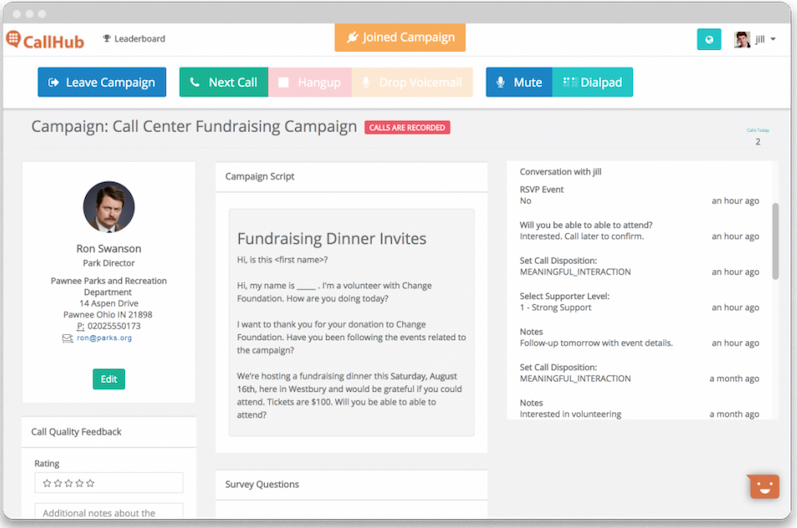

More features like gamification of campaigns, phone number verification, voicemail drop, etc. are also some great features to look out for.
Proposal software
For companies working with proposal documents, a proposal software allows you to create, present, send, sign, and track business proposals. Go for a software that:
- Easily integrates with your CRM
- Has an intuitive drag and drop editor with customizable templates and reusable blocks
- Allow clients to make edits/comments on the proposal for all considerations
- Sends notifications for the proposal that are opened and reminders for scheduled ones
- Allows you to sign and authorize the document digitally
- Let’s you manage all proposals from a single dashboard and keep track of interactions
Proposify is one such proposal software with all the features you will need to increase sales productivity.
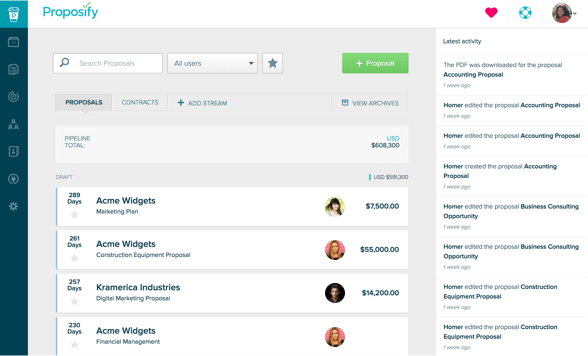

Internal communication software
To establish strong inter-team collaboration, you need a tool to facilitate it. The best solution to support your teams will have the following features.
- Chat/messaging option for communication to be used as an alternative to email
- Option to share different types of files and folders
- Ability to set up discussion forums/boards to discuss specific topics
- Easy integration with calendar, google suite, etc.
Slack is the most common internal communication tool that you can use for your teams.
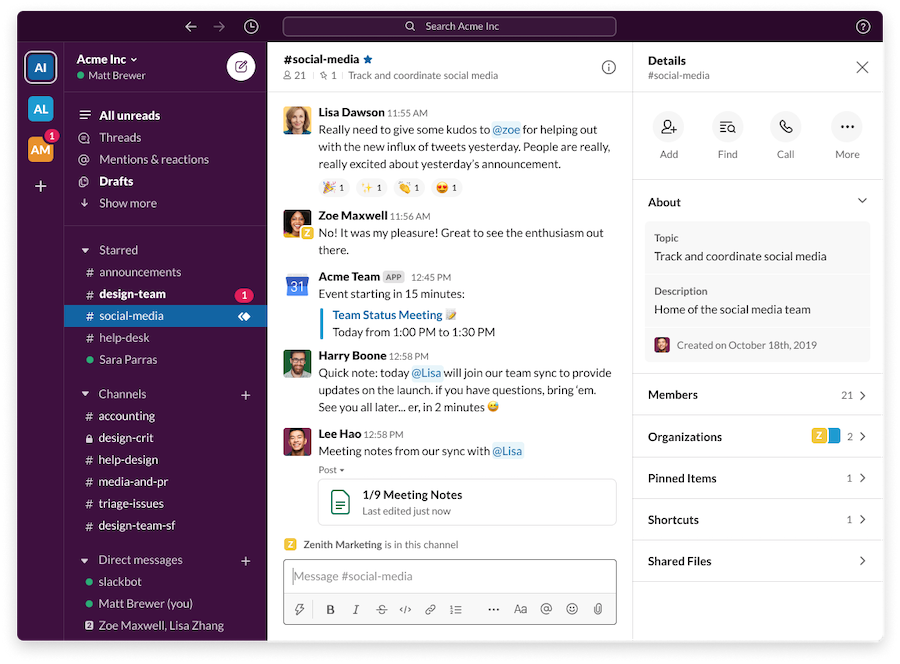

To conclude
If you want to hit higher revenue targets, improving the sales productivity of existing reps is your ticket. However, going at it without having a clear idea of what it is and what to track is a recipe for disaster. But, after having gone through everything covered above, you are more than equipped to get started with it.
In case you have any queries, shoot me a mail at [email protected], and we’ll be glad to help you out.
Feature image source: Campaign Creators


